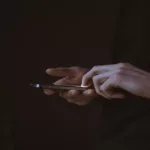Technology and art have had a contentious relationship for the past few decades. The onset of the internet has opened some new doors for musicians, poets, and other creatives, but has also made it more difficult to make a living.
Fortunately, technological advancements may be exactly what we need to fight back; the tide may be turning in favor of creative professionals once again, and new tech products are to thank.
Creativity Issues in Tech
Let’s recap some of the most important ways technology has interfered with the modern creative professional:
- Copyright and piracy issues. Even in the days of dial-up, piracy and copyright infringement have been serious issues. When a work of art, such as a film or a song, can be digitally represented, it can easily be copied infinitely and redistributed throughout the world—for free, and without the artist’s permission. This makes it difficult to make a living producing original work, and simultaneously makes it harder to make money.
- Payment and profitability. The availability of art, music, and film online also makes it harder for artists to make money from their work. Spotify, for example, one of the world’s most popular music streaming platforms, only pays musicians $0.0038 per stream. That means you’d have to hit 1,000 plays before making $3.80.
- Competition and outsourcing. The internet offers a vast network of artists, some of whom are inexperienced or desperate for money, meaning it’s easy to be undercut and outcompeted when looking for work. In the future, this effect could be exacerbated even further, when machine learning algorithms start to create human-worthy art independently.
How Tech Is Solving the Problem
So how could tech end up solving these issues, when it was responsible for them in the first place?
- Better platforms for artists. Some good news for artists is that more platforms are popping up to support their work. For example, Soundstripe is an online subscription service for filmmakers, giving them access to an ever-growing library of songs from artists who are paid fairly for their contributions. Crowdfunding platforms like GoFundMe have made it their mission to help artists get the resources they need to start new projects, and voluntary contribution platforms like Patreon help artists who distribute their work for free make money from the people who appreciate their work the most.
- Anti-piracy measures. Some developers are putting effort into creating anti-piracy technology—including, in a twist of irony, the founder of Napster. Sean Parker, attempting to launch a startup called Screening Room, wants to help people stream recently released movies at home for a fixed subscription cost. The problem, of course, is piracy, but Parker’s team is currently looking into device monitoring software to proactively detect—and prevent—unauthorized duplication or distribution of these streamed films.
- Increased reach. One of the more obvious benefits of technology for artists is the potential reach you can achieve by leveraging social media and online communities. Posting and distributing your art online puts you in touch with millions of more people than a local art show ever could. Ultimately, that means more sales opportunities and a wider audience for your work.
- New opportunities. Despite fears of an impending techno-apocalypse, there’s evidence to suggest that technology creates more jobs than it destroys, with data from the past 140 years of tech advancements to prove it. Instead of replacing jobs, new tech displaces jobs; workers move to higher-level positions, and utilize the technology to do even more amazing work. For artists, this means taking advantage of new technologies like 3D printers or virtual reality (VR) to create more intricate pieces of work, or more immersive experiences than ever before.
- Automation and augmentation. New tech can help automate certain creative processes, and augment others, making work easier for creative professionals. Rather than being replaced by machine learning algorithms that can create art of their own, machine learning could be one of many tools available to artists to create stunning and paradigm-challenging pieces. Automation of administrative tasks and household responsibilities could also free up more time for artists to spend on their work.
Creative professionals may never get as much credibility, stability, or pay as their STEM-focused contemporaries, but these new advancements in technology will certainly give them a more favorable future. As long as creatives keep pushing for more advancements and better conditions, there’s no limit to what new tech can accomplish.








